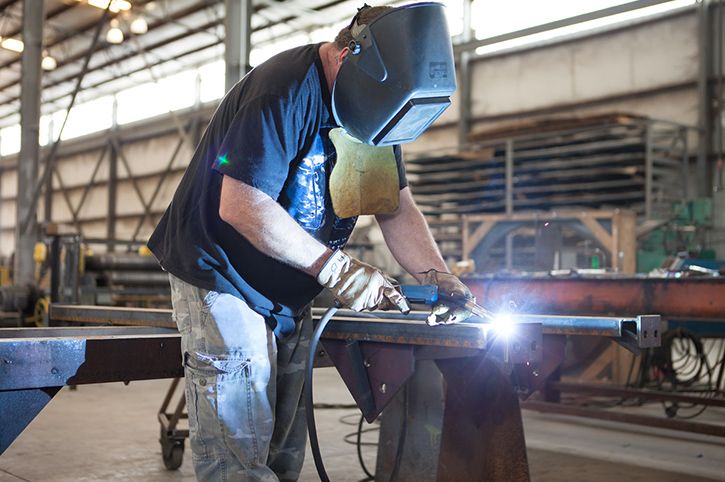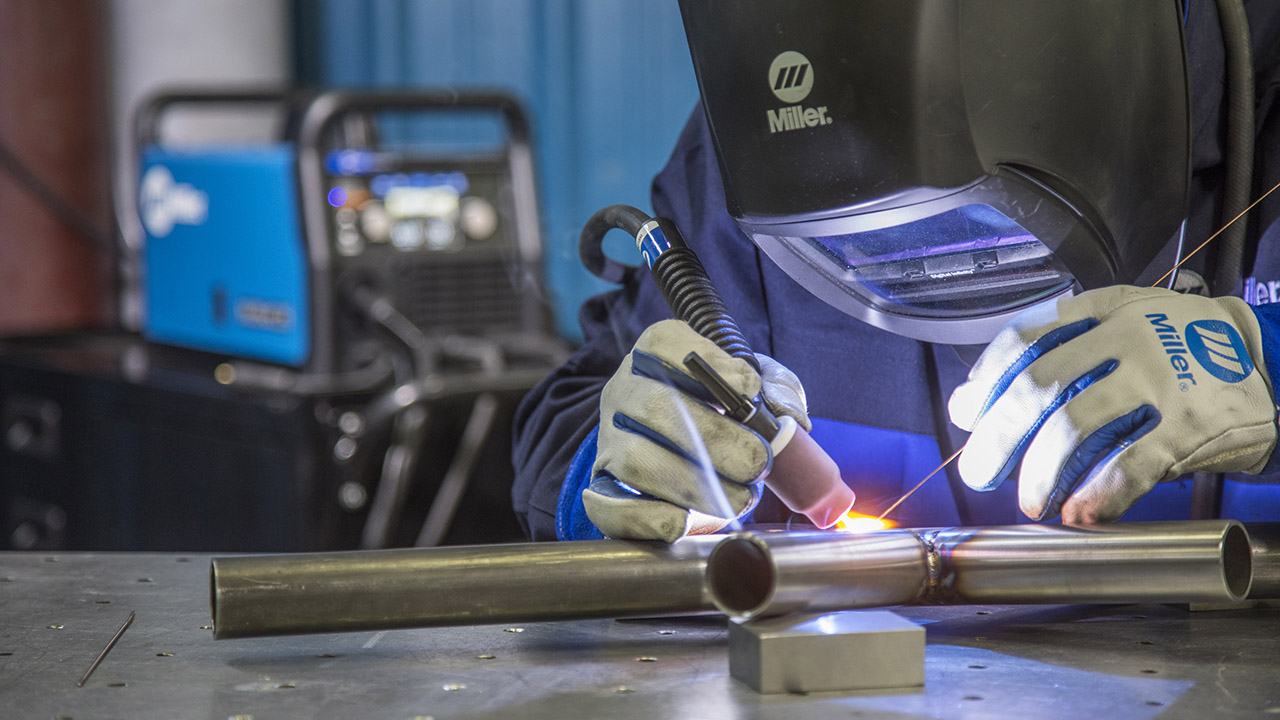Montana Mobile Welding and Repair Welding shares strategies on addressing heat distortion effectively
Everything about Welding: Secret Insights Into Techniques and Finest Practices for Success
Welding incorporates a selection of methods, each fit for specific materials and applications. Comprehending these techniques, such as GMAW, SMAW, and TIG, is necessary for achieving suitable results. The appropriate tools and security methods can not be ignored. As prep work and repairing play essential duties in the welding procedure, understanding these aspects can substantially improve the top quality of the final product. What are the key elements that guarantee a successful weld?
Understanding Various Welding Methods
Welding techniques encompass a range of techniques, each fit to certain applications and materials. Amongst the most usual methods are Gas Steel Arc Welding (GMAW), Protected Metal Arc Welding (SMAW), and Tungsten Inert Gas Welding (TIG) GMAW, also called MIG welding, is preferred for its speed and adaptability, making it excellent for slim materials. SMAW, or stick welding, is favored for its simpleness and efficiency in outside settings, especially with thicker steels. TIG welding provides accuracy and control, making it suitable for complex work and non-ferrous steels (Fabrication). Each strategy has its unique advantages and factors to consider, permitting welders to pick the very best approach based upon the job's demands, material type, and desired results. Recognizing these strategies is necessary for successful welding
Necessary Welding Devices and Tools
While numerous welding strategies need specific skills, the best equipment and tools are equally vital for accomplishing top quality outcomes. Crucial welding devices includes welding devices, which differ relying on the strategy-- such as MIG, TIG, or stick welding. Protective gear, consisting of helmets, aprons, and handwear covers, assurances safety and security and convenience during the procedure. On top of that, components and clamps aid safeguard products in position, guaranteeing precision in welds. Consumables like welding rods, cable, and protecting gas are likewise vital parts that influence the top quality of the weld. Moreover, devices such as cutters and mills assist in surface preparation and post-weld ending up, adding to a professional result. Spending in high-grade equipment ultimately improves the effectiveness and effectiveness of welding tasks.
Safety And Security Practices in Welding
Proper safety and security methods are crucial in the welding sector to safeguard employees from potential threats. Welders must use suitable individual protective tools (PPE), consisting of safety helmets with proper shading, gloves, and flame-resistant clothing. Appropriate air flow is vital to minimize direct exposure to damaging fumes and gases produced throughout the welding process. Additionally, employees ought to be educated in the appropriate handling of welding equipment to avoid crashes. Fire precaution, such as maintaining combustible materials away from the welding area and having fire extinguishers easily offered, are essential. Regular inspections of devices and work areas can aid recognize possible risks prior to they cause crashes. By adhering to these safety and security methods, welders can produce a safer working atmosphere and reduce risks related to their profession.
Readying Products for Welding
Preparing materials for welding is an important action that substantially influences the high quality and stability of the final product (Welding). Appropriate preparation involves cleansing the surface areas to eliminate impurities such as rust, oil, and dirt, which can jeopardize the weld. Methods such as grinding, fining sand, or using solvents are typically used to accomplish a clean surface. Additionally, ensuring that the products mesh comfortably is crucial; gaps can cause weak welds. It's also crucial to take into consideration the placement and positioning of the parts, as this will certainly influence the ease of welding and the last end result. Picking the proper filler product and guaranteeing compatibility with the base steels is important for achieving solid, resilient welds.
Tips for Getting High-Quality Welds
Achieving top notch welds requires focus to information and adherence to ideal practices throughout the welding process. Correct joint prep work is vital, ensuring surface areas are tidy and complimentary from pollutants. Picking the appropriate filler product and welding method based on the base metals is essential for excellent bonding. Maintaining regular traveling speed and angle while welding can advertise and stop problems harmony. Additionally, managing warmth input is necessary; too much heat can result in warping and compromised joints. If essential, routinely inspecting the welds during the procedure permits for prompt modifications. Finally, employing proper post-weld treatments, such as cleansing and tension relief, can improve the longevity and honesty of the weld, ultimately making sure an effective end result.
Repairing Common Welding Issues
Welding usually provides obstacles that can impact the top quality and honesty of the end product. Typical concerns such as porosity, inconsistent weld grains, and overheating can arise, each calling for specific troubleshooting methods. Comprehending these problems is necessary for welders to improve their abilities and accomplish excellent results.
Porosity Issues Discussed
Although porosity can usually be neglected, it remains an important concern in welding that can jeopardize the honesty of an ended up product. Porosity describes the existence of small gas pockets within the weld grain, which can lead and weaken the joint to premature failure. This problem normally occurs from impurities, dampness, or inappropriate protecting gas insurance coverage during the welding procedure. To minimize porosity, welders ought to validate that the base materials are dry and clean, utilize proper shielding gases, and preserve consistent welding criteria. Regularly inspecting the tools and atmosphere can likewise aid determine possible concerns prior to they show up in the weld. Attending to porosity effectively is essential for accomplishing solid, sturdy welds that meet high quality criteria.

Irregular Weld Beads
Inconsistent weld beads can significantly affect the top quality and stamina of an ended up item. Various aspects contribute to this concern, including inappropriate traveling speed, inaccurate amperage settings, and irregular electrode angles. When the welder moves as well promptly, a bead may show up narrow and do not have penetration, while relocating too gradually can cause too much buildup. Furthermore, utilizing the wrong amperage can cause either damaging or too much spatter, both of which compromise weld integrity. The welder's strategy, such as inconsistent torch motion, can additionally result in unequal grain look. To reduce these problems, welders must concentrate on maintaining consistent, regulated motions and making certain appropriate tools setups to accomplish harmony in their welds. Uniformity is key to achieving reputable and solid welds.
Getting Too Hot and Bending Issues
Excessive heat during the welding procedure can bring about substantial getting too hot and contorting problems, influencing the structural stability of the workpiece. These troubles typically manifest as distortion, which can jeopardize welding stainless steel positioning and fit-up, making more assembly testing. Variables adding to overheating include the option of welding parameters, such as voltage and travel rate, along with the kind of material being welded. To reduce these concerns, welders ought to preserve constant travel speed and ideal warmth input while monitoring the workpiece temperature. Additionally, pre-heating or post-weld warmth therapy can help minimize anxieties caused by fast air conditioning - Belgrade Fabrication. Regular evaluation and adherence to best techniques are vital in preventing overheating and guaranteeing the long life and reliability of bonded frameworks
Frequently Asked Inquiries
What Are the Career Opportunities in the Welding Sector?
The welding sector supplies diverse profession opportunities, including placements as welders, teachers, engineers, and assessors. Specialists can operate in production, construction, aerospace, and auto markets, gaining from solid demand and competitive wages in different functions.
Exactly How Can I Improve My Welding Rate Without Sacrificing Top Quality?
To improve welding speed without compromising top quality, one ought to exercise effective strategies, maintain tools, enhance setups, and boost hand-eye control. Routine training and seeking comments can likewise greatly add to attaining much faster, top notch welds.
What Accreditations Are Readily Available for Welders?
Countless accreditations exist for welders, including those from the American Welding Culture (AWS), the National Facility for Building And Construction Education And Learning and Research (NCCER), and different industry-specific organizations. These credentials enhance employability and show ability efficiency.
Exactly How Does Welding Impact the Properties of Metals?
Welding influences the properties of steels by altering their microstructure, have a peek at this website which can result in adjustments in toughness, firmness, and ductility. Warmth input and cooling prices throughout the procedure substantially influence these product qualities.
Can I Weld Dissimilar Metals With Each Other?
